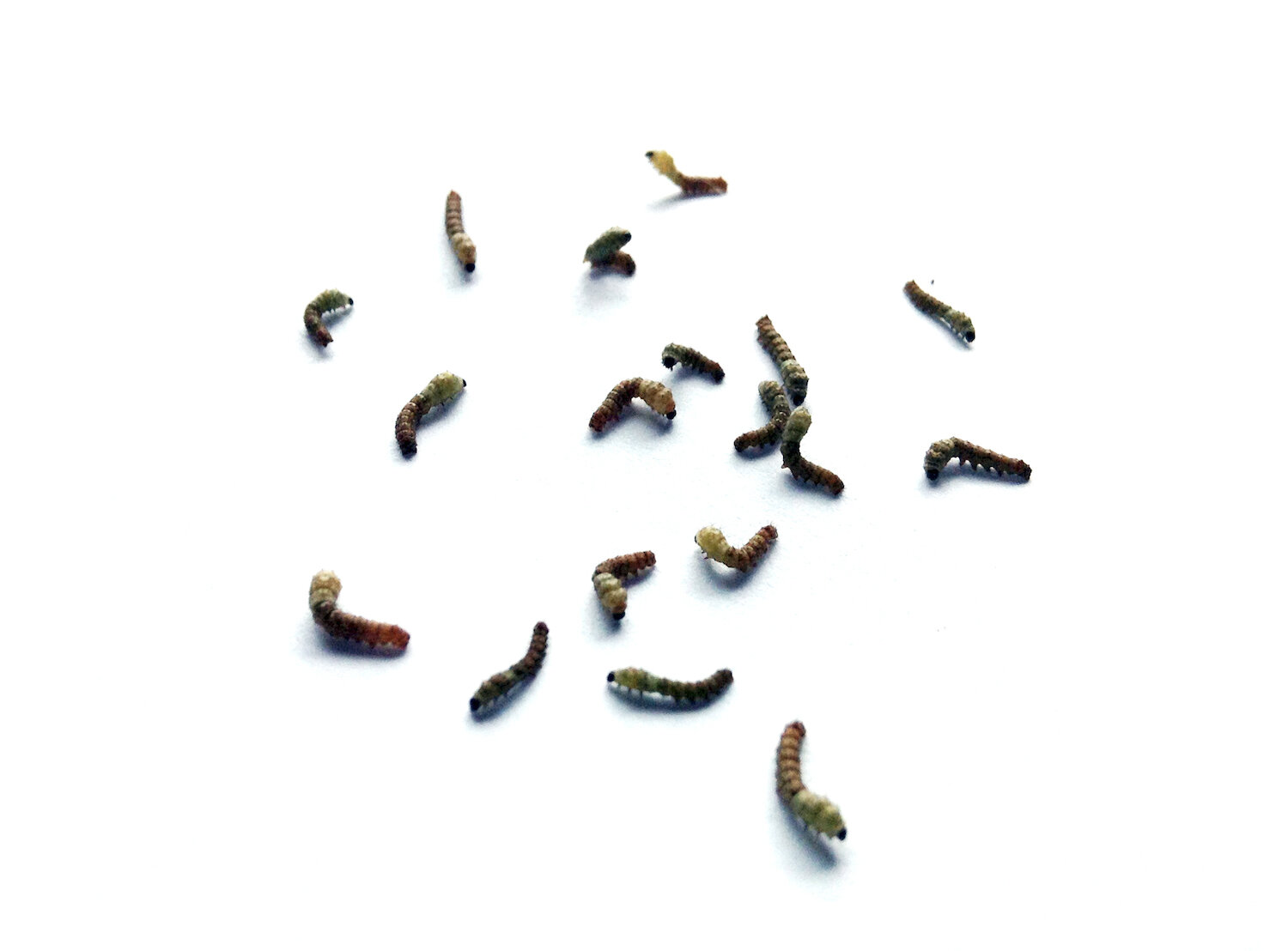Aquela altura do ano outra vez
11.04.2016: Lagartas do bicho-da-seda recém-nascidas / Newborn silkworms
Sim, é verdade. Nem consegui acabar de contar a história da nossa produção de seda do ano passado e já cá estão as lagartas de 2016. Mas pronto, é o que acontece quando se quer pôr uma quinta a produzir seda, linho, lã e escrever sobre isso, fazer um estudo sobre lãs portuguesas, manter uma loja a funcionar e ainda ter um bébé pelo meio.
Eu estava a planear acabar o relato assim de rompante, enquanto mantínhamos as lagartas num sítio fresco e escuro para atrasar um bocadinho a eclosão delas, mas a Natureza é que manda e poucos dias depois das amoreiras se encherem de folhas, a maior parte das lagartas decidiu nascer enquanto os ovos ainda estavam guardados dentro dos envelopes.
Quando fomos abrir para confirmar que estava tudo intacto, encontramos dezenas e dezenas de lagartas perdidas dentro dos envelopes. A minha reacção inicial foi pensar que estava tudo perdido e que este ano não ia haver seda para ninguém, mas como tenho tendência para ficar a olhar para o leite derramado, ou neste caso para as lagartas prematuras, consegui perceber que a maior parte ainda estava viva, à espera que as pusessem num sítio mais confortável e que lhes dessem de comer rapidamente.
Executada a operação de salvamento e aguardados uns dias, verificamos que a maior parte sobreviveu e que, felizmente, muitos dos ovos ainda não tinham eclodido.
Lição aprendida.
Hoje, as mais velhas já tem uns dez dias (aqui estão elas a perguntar onde é que está o lanche) e uma parte nasceu apenas ontem, por isso desta vez consegui fotografá-las mesmo desde o início.
11.04.2016: Lagartas do bicho-da-seda recém-nascidas / Newborn silkworms;
20.04.2016: Lagartas do bicho-da-seda com 10 dias / 10 days old silkworms;
20.04.2016: Lagartas do bicho-da-seda com dez dias e outras de eclosão mais recente / silkworms 10 days old side-by-side with others that hatched more recently;





